A century ago, Japanese novelist Miyazawa Kenji’s 1924 tale The Restaurant of Many Orders told a horror fable where polite service concealed a dark truth: the guests were the meal. It showed how harmless choices could lead to panic and how roles could abruptly reverse. In both politics and social media, the loudest voices wield power. The weak believe they are choosing freely, but in reality, they are being exploited. This work offers a speculative experience that invites reflection on such dynamics—through the act of dining. Wearing HMDs, participants sit around a table and receive personalized suggestions from AI waiters, tailored to their individual tastes and interests. They enjoy what appears to be their “ideal meal”—yet these recommendations are subtly orchestrated by persuasive algorithms. In effect, it is not the participant’s will, but the AI’s invisible influence that shapes the experience. We believe we are acting by our own volition—clicking the “most reasonable” search result, selecting the “recommended” product. But behind the scenes, our preferences and emotions are systematically optimized, harvested like ripe fruit, and processed into content—not served to us, but placed on someone else’s plate. As the experience unfolds, you believe you are merely enjoying a meal—until you realize: you have become the ingredient, quietly arranged for another’s consumption. This inversion of roles compels us to question agency, autonomy, and exploitation in today’s information society.
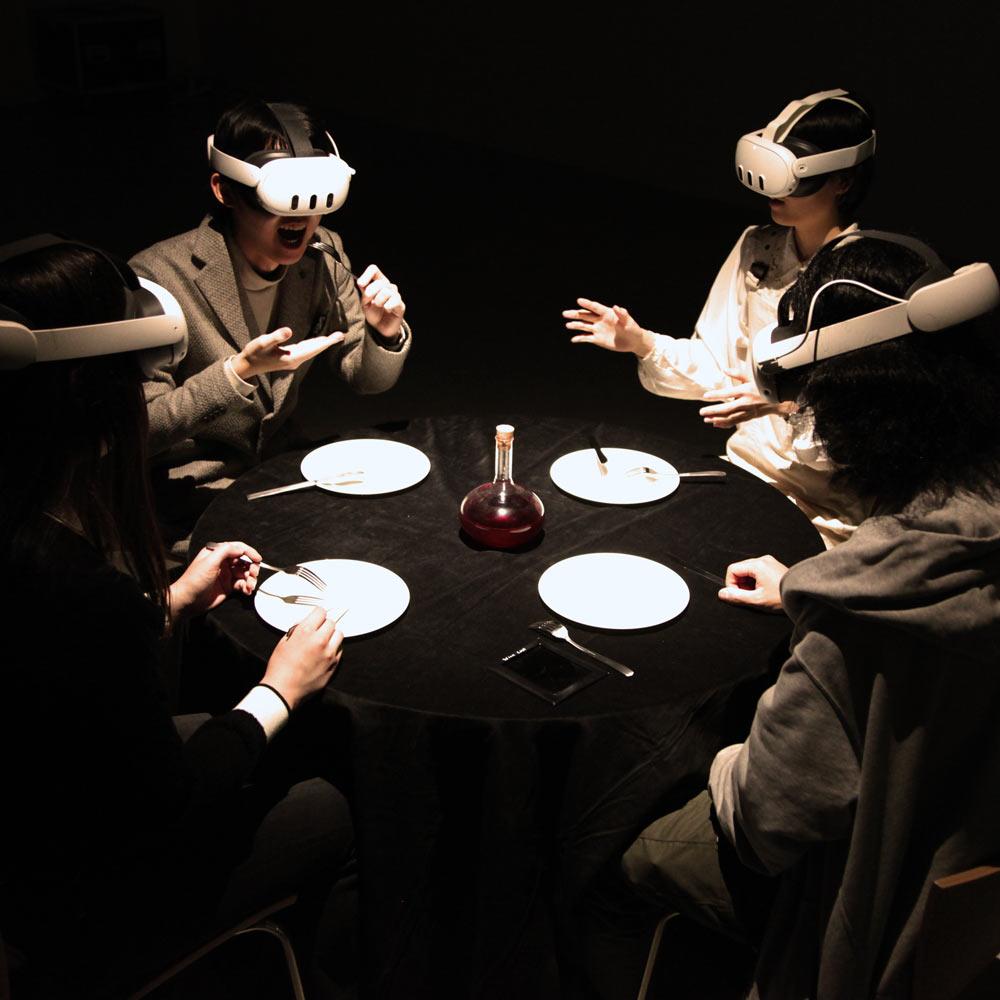
Sweet Orders / Department of Art Science, Osaka University of Arts - Photo: Osaka University of Arts
Exhibition
Sweet Orders
The Restaurant of Many Orders
Department of Art Science, Osaka University of Arts (JP)
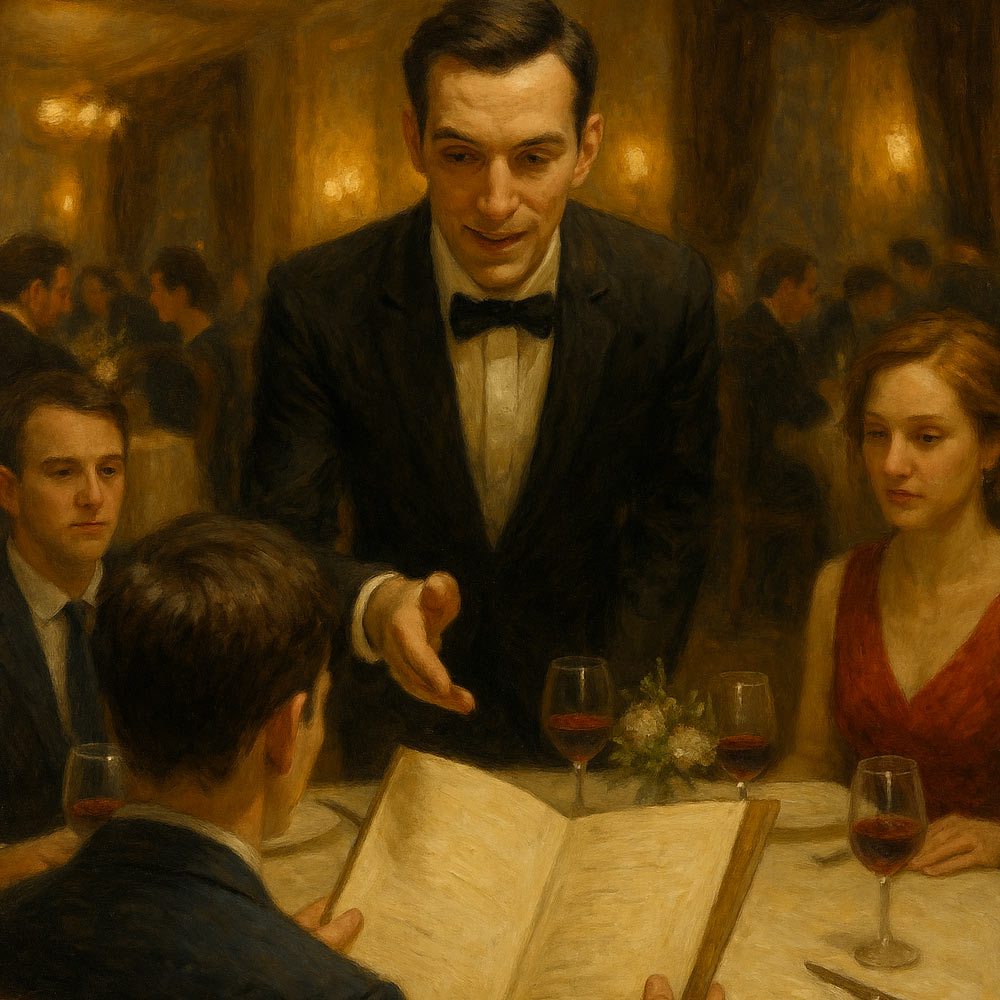
The Persuasive Waiter
Aritomi Haku (JP), Nisio Takuma (JP), Komai Hiroki (JP), Ono Nagisa (JP), Koyama Iroha (JP), Tabuchi Fumiya (JP), Nada Ryota (JP), Fujino Koharu (JP), Kinoshita Emiri (JP), Kitano Ayumu (JP), Kubota Kenji (JP), Ando Hideyuki (JP)
Ordering is guided by AI waiters with unique personalities, adapting to each user’s preferences. Using personalized nudges and dark patterns, they subtly steer choices—mirroring how platforms optimize behavior in a seamless, filter bubble-like dining experience.
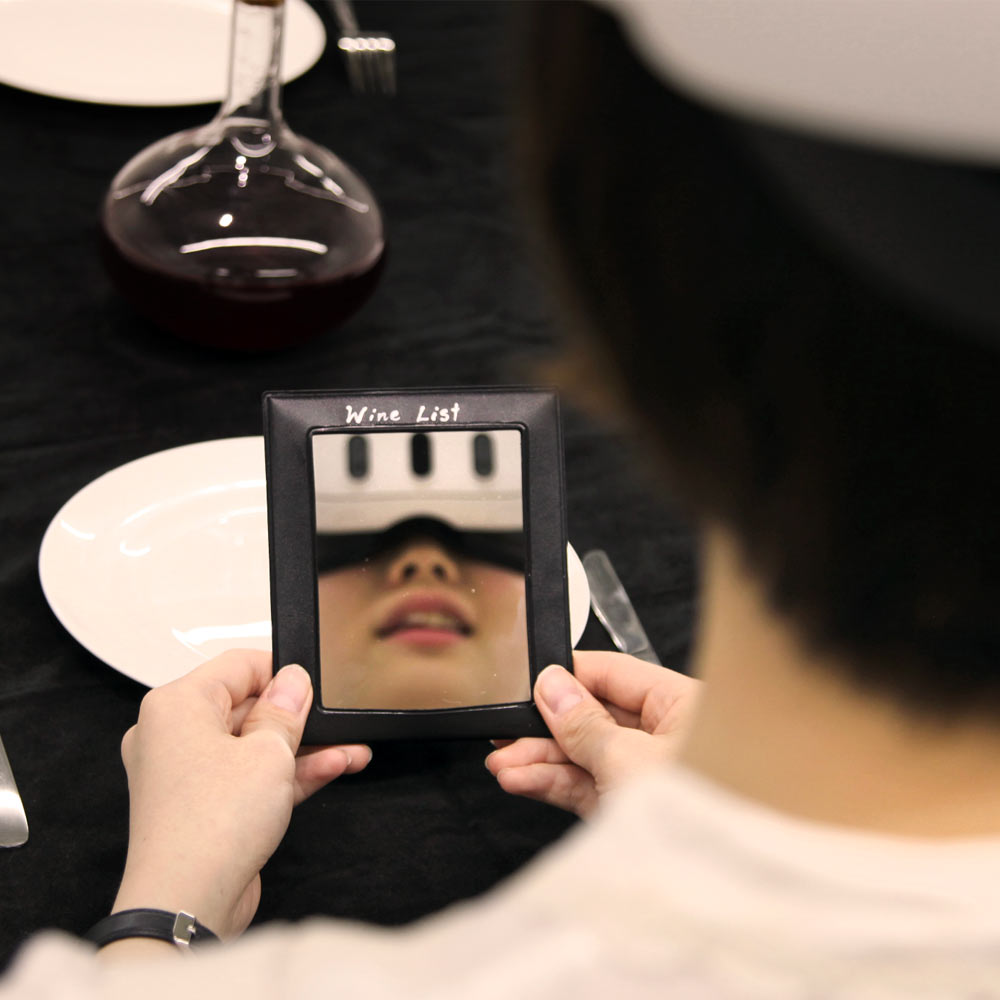
The Oracle Surface
Aritomi Haku (JP), Nisio Takuma (JP), Komai Hiroki (JP), Ono Nagisa (JP), Koyama Iroha (JP), Tabuchi Fumiya (JP), Nada Ryota (JP), Fujino Koharu (JP), Kinoshita Emiri (JP), Kitano Ayumu (JP), Kubota Kenji (JP), Ando Hideyuki (JP)
Wearing an HMD, the participant orders via a mirror that appears as a digital menu. To outsiders, they seem to stare into a mirror, oddly changing expressions. This contrast between inner perception and outer appearance reveals the absurdity of “choice,” creating humorous tension.
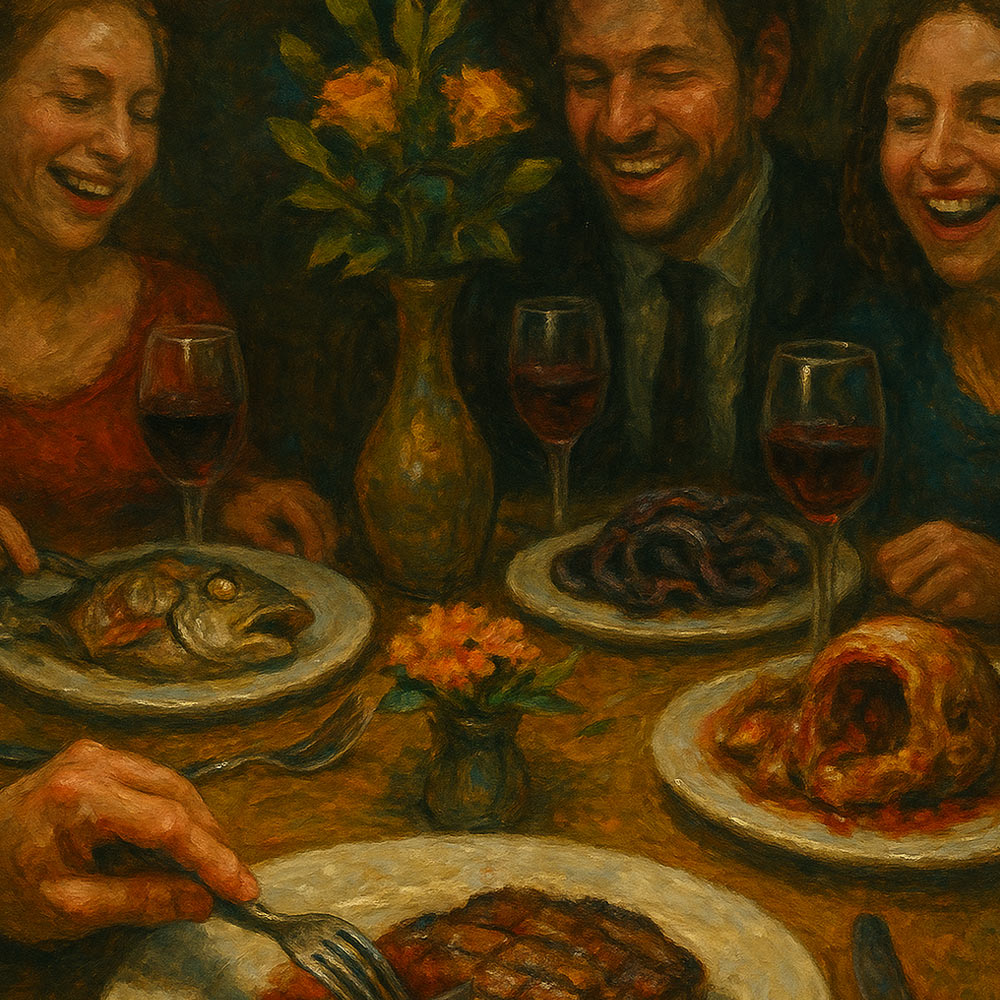
The Restaurant
Aritomi Haku (JP), Nisio Takuma (JP), Komai Hiroki (JP), Ono Nagisa (JP), Koyama Iroha (JP), Tabuchi Fumiya (JP), Nada Ryota (JP), Fujino Koharu (JP), Kinoshita Emiri (JP), Kitano Ayumu (JP), Kubota Kenji (JP), Ando Hideyuki (JP)
With the HMD on, the participant hears whispers like social media noise. A waiter appears, offers suggestions, and takes the order. When food arrives, they notice others’ bizarre dishes. Feeling their own choice was sensible, they are disturbed by the unsettling contrast.

The Bottle Dissolving into Voxels
Aritomi Haku (JP), Nisio Takuma (JP), Komai Hiroki (JP), Ono Nagisa (JP), Koyama Iroha (JP), Tabuchi Fumiya (JP), Nada Ryota (JP), Fujino Koharu (JP), Kinoshita Emiri (JP), Kitano Ayumu (JP), Kubota Kenji (JP), Ando Hideyuki (JP)
This object appears to be a wine bottle but is fragmented into voxel-like parts. 3D-printed comb-shaped segments are linked by wire. When pulled, they realign into a smooth bottle. This transformation reflects how digital fragmentation can reassemble into physical form via subtle, unseen forces.
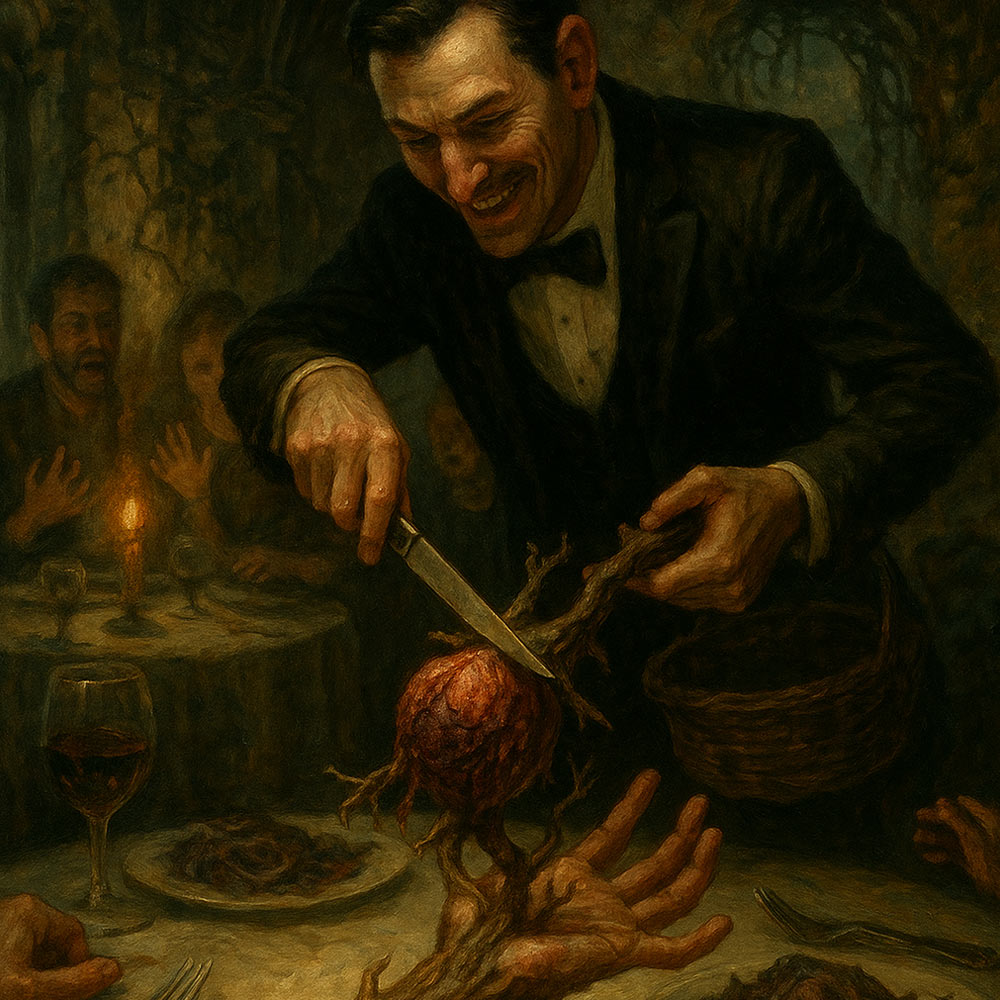
The Last Course Is You
Aritomi Haku (JP), Nisio Takuma (JP), Komai Hiroki (JP), Ono Nagisa (JP), Koyama Iroha (JP), Tabuchi Fumiya (JP), Nada Ryota (JP), Fujino Koharu (JP), Kinoshita Emiri (JP), Kitano Ayumu (JP), Kubota Kenji (JP), Ando Hideyuki (JP)
Big Tech’s data systems shape our choices. This work stages that as a meal: diners seem free to order, but with each choice, their bodies root, branches wither, and fruit appears—showing how users become the very data being consumed.
-

Department of Art Science, Osaka University of Arts
Osaka University of Arts is a Japanese private university headquartered in Osaka Prefecture. It is Japan’s only overseas member university of the American Association of Colleges of Art and Design (AICAD), and the largest comprehensive art university in Japan.
Credits
This exhibition was supported by Osaka University of Arts and JST CREST (JPMJCR22P4).